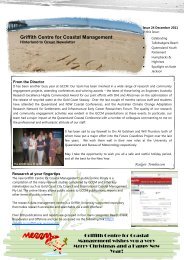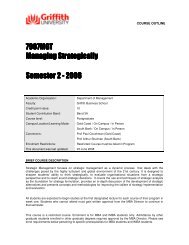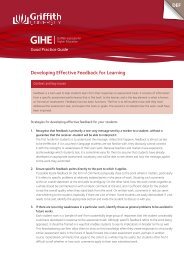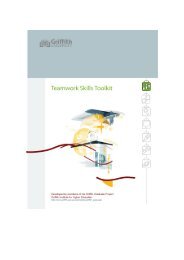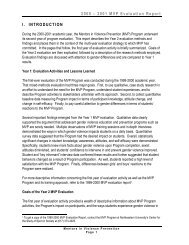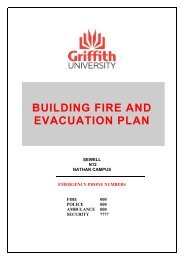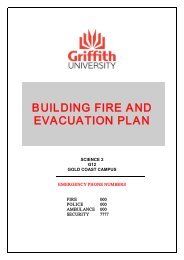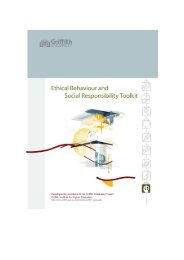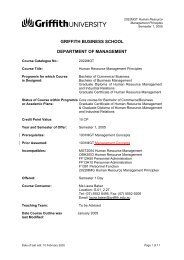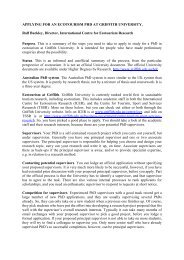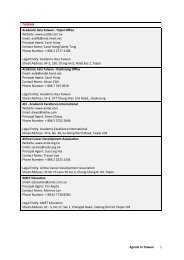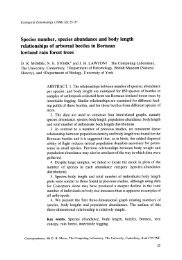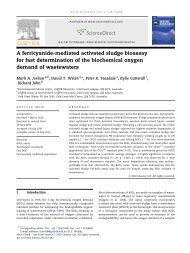Purpose of this Toolkit - Griffith University
Purpose of this Toolkit - Griffith University
Purpose of this Toolkit - Griffith University
You also want an ePaper? Increase the reach of your titles
YUMPU automatically turns print PDFs into web optimized ePapers that Google loves.
WRITTEN COMMUNICATION SKILLS<br />
Structuring the writing process<br />
This checklist will help students to monitor their own writing.<br />
Checklist<br />
1. In the essay introduction have you: <br />
a. taken account <strong>of</strong> the interests <strong>of</strong> your reader and identified possible sources <strong>of</strong><br />
resistance?<br />
b. analysed what the question requires you to do?<br />
c. defined the scope <strong>of</strong> your topic without being apologetic?<br />
d. attracted the reader’s attention early, either using a thesis statement or in some other<br />
way?<br />
e. included a clear, arresting thesis statement, or planned one to use later in the essay?<br />
f. orientated your reader, either using a forecasting statement or another method?<br />
2. In the body <strong>of</strong> your essay have you:<br />
a. considered using an organising framework for your paragraphs?<br />
b. ensured that each paragraph has one central idea?<br />
c. ensured your paragraphs support the essay’s main idea or relate to it in some other<br />
way?<br />
d. used appropriate evidence, illustrations and arguments to support each paragraph’s<br />
main ideas?<br />
e. made links between preceding and following paragraphs and from the paragraphs to<br />
the essay’s main idea?<br />
f. included a final statement that either sums up the central idea <strong>of</strong> each paragraph,<br />
suggests implications, or provides one or more <strong>of</strong> the linkages mentioned in the<br />
previous point.<br />
3. In your conclusion have you:<br />
a. summarised the main evidence in the essay?<br />
b. linked ideas and evidence back to the main ideas?<br />
c. provided rounding <strong>of</strong>f, or evaluative comments, or pointed to implications or<br />
possible further developments?<br />
d. dealt with any possible objections on the part <strong>of</strong> the reader?<br />
e. avoided introducing unrelated material?<br />
4. In the essay as a whole have you:<br />
a. established and maintained an appropriate style and tone?<br />
b. provided signposts for your reader through the essay’s structure, headings and<br />
transition words?<br />
c. avoided overly complex words and used acronyms and jargon judiciously?<br />
d. made conscious decisions about the use <strong>of</strong> first, second or third person pronouns,<br />
contractions, direct questions, run-on expressions and quotations?<br />
e. used an appropriate level <strong>of</strong> grammatical correctness?<br />
f. pro<strong>of</strong>read your work several times for clarity, brevity, spelling and typographical<br />
errors?<br />
Baker, E., Barrett, M. & Roberts, L. (2002). Working Communication. Brisbane: John Wiley & Sons Australia, pp. 211-212.<br />
Teaching tips<br />
7




